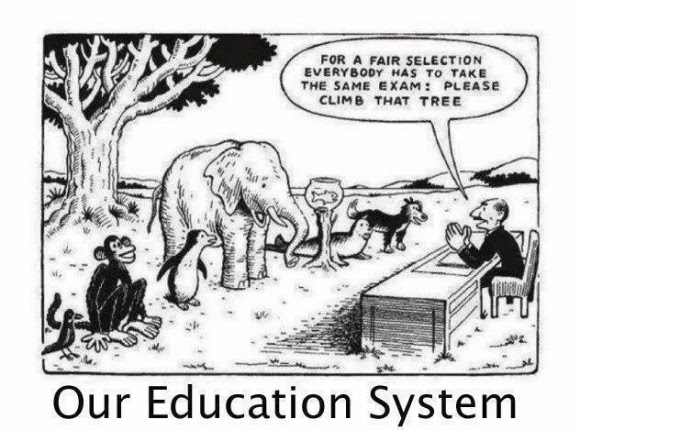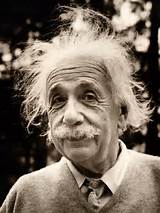ADD
ADD / ADHD: Here you will learn how to help these children.
It is often thought that these children are unable to concentrate. In reality, the child with ADD / ADHD is apt to lock in with an exceptional degree of focus when he is genuinely interested. (Resource 1, Page 50). At an early age Einstein was considered lacking in intelligence, because teachers had trouble getting him to focus. (Resource 1 below, page 56).
- Because of MRI and SPEC brain scans, psychologists are rethinking everything they knew about learning disorders.
- According to Dr. Amen, there are 7 different kinds of ADD . Note that not all of them show brain damage, which indicates that some may be what is often described as different learning styles as far back as Plato. In other words, at least some of those diagnosed with ADD/ ADHD may not have a learning disorder at all.
- Like so many learning disorders, there are gifts of genius attached. Einstein’s dis-tractability, which is common among children with ADD / ADHD, is what enabled him to develop his Theory of Relativity. It is important that parents and educators understand their children’s strengths, and not just their weaknesses. Spend more time on their interests, rather than their weaknesses. (Resource 1) page 63). What really disables a person is their belief that they are disabled (Resource 1, page 64). There is good suffering, which is working at something. Bad suffering is humiliation, depression and isolation (Resource 1, page 65)
The Genius That Goes With ADD / ADHD
- These children showed an enhanced ability to overcome “constraining influences”. (Resource 1, page 54).
- 40% of children with ADD / ADHD also have dyslexia. When they are reading something that disinterests them, their mind wonders uncontrollably (Resource 1, Page 57). When they are reading something that interests them, their mind can be laser-beam intense. (Resource 1, Page 58). This also describes the learning styles analytical thinker, and hands on learners.
- Someone who is impulsive by nature can “make a lot of mistakes” in business. So hook up with someone who is by nature methodical and looks at all the possibilities (Resource 1, page 63). Walt Disney was highly creative in his field of interest. But he was unable to make a success of his abilities, until he hired his bother to help him.
- Drugs do not teach the behaviors that will help those with ADD / ADHD function in the world and workplace as they grow older (Resource 1, page 67).
- When given the least structure, these children are better able to discipline themselves (Resource 1, page 67). They also need to take frequent breaks (Resource 1, page 69). Both of these things are also true with the learning styles of the Hands On Learner, and the Analytical Thinker.
- What is obvious to children with ADD / ADHD and dyslexia, others don’t see at all. They have an uncanny ability to connect seemingly unrelated ideas. (Resource 1, pages 70-71). It is a mistake to think that we need to make brain differences go away (Resource 1, page 77). Einstein, who so hated rote learning, once said, “Imagination is more important than knowledge.” (Resource 1, Page 78)
How To Help These Children Succeed
- Finding a field or area of interest that captivates the child with with ADD / ADHD is perhaps the single most important way to ensure future success in life (Resource 1, Page 72). When you find areas of talent, then motivation will follow.” (Resource 1, Page 74).
Resources
- The Power of Different: The Link Between Disorder and Genius
- Karen Walker, a professional tutor, recommends Ring Around The Phonics (Whole Brain Teaching) to help children with ADD learn to read..
Helping the Child With a Learning Disorder
 Children are too often labeled with a learning disorder. We hear so many such labels: (1) Dyslexia, (2) ADD, ADHD and other attention disorders, (3) anxiety, (4) Melancholy (depression), (5) Bipolar, (6) Schizophrenia, (7) or Autism Spectrum.
Children are too often labeled with a learning disorder. We hear so many such labels: (1) Dyslexia, (2) ADD, ADHD and other attention disorders, (3) anxiety, (4) Melancholy (depression), (5) Bipolar, (6) Schizophrenia, (7) or Autism Spectrum.
It is painful and destructive to the child. But It is also destructive and painful to the parent and society as well. Insurance companies require these labels in order to issue payment on treatment. But it is by nature very inaccurate and misleading: it is not how those in the medical field treat patients (resource 1, page 15).
Recent discoveries about learning disorders
It is important to note that recent discoveries using brain MRI and SPEC scans are causing those in the field to rethink everything they thought they knew about learning disorders. Science and insurance companies both were wrong. Here is what parents and teachers of these inaccurately labeled children need to understand:
Important things to know about all learning disorders:
We have been wrong: focusing mostly on areas of learning in which children were weakest. We now know it is much more important to focus mostly on a child’s interests.
Instead focus 80% on what interest the children, and 20% on their weakest areas. This is just opposite of what educators have been doing, and can cause more harm than good.
We have learned even more:
- There is no such thing as a normal brain. (resource 1 pg 7)
- Scientists were surprised to learn that the most creative individuals are at higher risk for mental illness than are the less creative.
- We have all seen examples of those with brain differences achieve great success. Scientists were surprised to learn that these people often achieve great success because of their learning disorder, not in spite of. (resource 1, pg 9)
- Einstein could not have made his historic scientific breakthroughs were it not for his day dreamy, distractible mind (ADD). In the words of psychologist Scott Barry Kaufman, ” I don’t think everyone (with a brain difference) has the potential to achieve greatness in every field, but I think everyone has the potential to achieve greatness in some field.” (resource 1, pg 11) If we educators find that spark that ignites their interest, these children find ways to achieve what interests them, even if it takes improving what they are weak in.
- “The irony is that while my patients are focused on getting past the obstacles that exist between them and their larger goals, it is very often, the case that there is great strength to be mind from those obstacles, and brilliance to be observed in how my patients both utilize their struggles, and maneuver around them.” (resource 1,pg 12) In fact children who do not learn to overcome obstacles are less equipped to overcome them as adults.
- “Every single healthy human being lies somewhere on every psychopathology spectrum (e.g. schizophrenia, autism, mood disorders). What’s more, we each show substantial fluctuations on each of these dimensions each day, and across our lifespan”. Mental disorders are not only prevalent, they’re overlapping. There is no such thing as a single, neat diagnosis. (resource 1, pg 8)
Note:
- Plato talked about different personality types /learning styles, and it still holds true today. Different personalities types/ learning styles are often misdiagnosed as having learning disabilities (resource 2).
- Whole Brain Teaching improves the health of the brain for those with learning disabilities. Learn more at our website.
- How To Help Your Child Learn is a real life experience that illustrates this subject.
- Karen is a professional tutor. She uses Ring Around The Phonics to teach children with learning disabilities.
Resources
- The Power of Different: The Link Between Disorder and Genius
, by Gail Saltz, M.D.
- Please Understand Me II
., by David Keirsey


